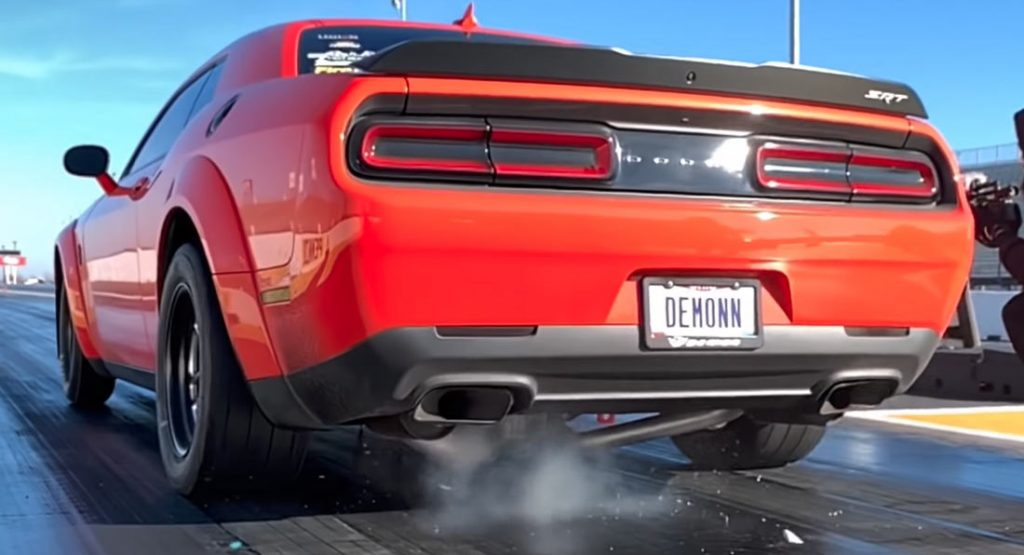Update: In response to our original story, a Dodge spokesperson said that there is nothing to investigate, issuing the following statement: “There is nothing to investigate. Warranty concerns are a non-issue for Demon owners with unmodified vehicles. Modifications using non-OEM parts should not raise questions about the durability of the stock Demon or its performance.”
Original article follows below.
Executives from Fiat Chrysler Automobiles are investigating a video that showed the rear differentials of two Dodge Challenger Demons exploding at the drag strip.
The video started doing the rounds online a couple of weeks ago and shows the differentials of two Demons giving up the ghost at an event hosted by the Legions of Demon car club at the Houston Raceway Park. One of the Demons featured was modified to 1000 hp and continued to run the stock differential, while the other’s engine was untouched.
As The Drive reports, there were 42 stock and five modified Demons at the event. Almost all of these vehicles were able to record sub-10 second quarter mile times, but there were four that chewed their differentials. Granted, that’s a small percentage of the cars present, and the modified one that failed maybe should have its diff beefed up, but this is not an isolated case.
A number of other Demons have reportedly suffered catastrophic differential failures since deliveries of the vehicle commenced. According to some, the Demon’s differential needs some kind of brace to ensure it can handle the force of launching at full power from a standstill.
No news from Dodge yet
Dodge has declined to provide a statement regarding the issue, but has launched an internal investigation into the incidents.
What’s particularly interesting about the four incidents at the Demon gathering is that they took place at a location where the drag strip surface was prepped by Mass Traction. This is the exact same company that FCA used during development for the Demon, so there shouldn’t be a problem, right?
Well, things are a bit more complicated than what they seem. The Drive reported that the owner of Mass Traction, Brandon Mass, noticed “cars that ran full-strength passes on lower-traction surfaces were more likely to break when they returned to perfectly-treated pavement delivering maximum grip.”
A possible explanation
Mass thinks it’s possible that launching the Demon on a low-grip surface causes microscopic stress fractures in the rear differential due to the violent wheel and tire shake. Thus, when the car is then put on a high-grip surface and launched, the already fractured (and weakened) diff simply can’t handle the full force of the launch.
“Our job is to prep the surface to the maximum that it can be, which exposes the weak points. That’s why Dodge brought us in for testing,” he told the website. “The Demon powertrain itself is bulletproof… but we did see if the car saw some prior trauma from a rougher launch, we would see part failures [on our treated surface].”
Seems like a logical explanation, although a. it doesn’t come from Dodge, so it’s unofficial, and b. as far as we know, there’s no instruction on the level of grip a surface must have in order to deploy the engine’s full 840 HP.
In any case, we have contacted FCA for additional information or comments concerning the issue, so stay tuned.
Article edited for clarity



